Music festivals are all the rage right now. The concept is pretty simple. Get a few days’ worth of musical acts, promote it to their fans, and then make money. Hit the right mix of artists at the right time for the right causes and your festival will be legendary. I’m talking about events like Woodstock and Live Aid. The key is the audience. The rock music community is an especially tight-knit and accepting group. This community is a big part of what makes festivals so successful. In not too much of a stretch, marketing conferences are our festivals and we have similar communities. And the Woodstock of marketing conferences is Content Marketing World 2019.
Instead of Jimi Hendrix, The Who and Janis Joplin; we have Joe Pulizzi, Robert Rose, Tamsen Webster, and…Henry Rollins (whose band played at Woodstock 94!). They, and so many more, brought their greatest hits and newest insights to keep us entertained and intrigued for four days. I can’t cover everything, but here are the most memorable performances and takeaways that will drive my content marketing for the next year.
The Star-Spangled Banner (Jimi Hendrix)
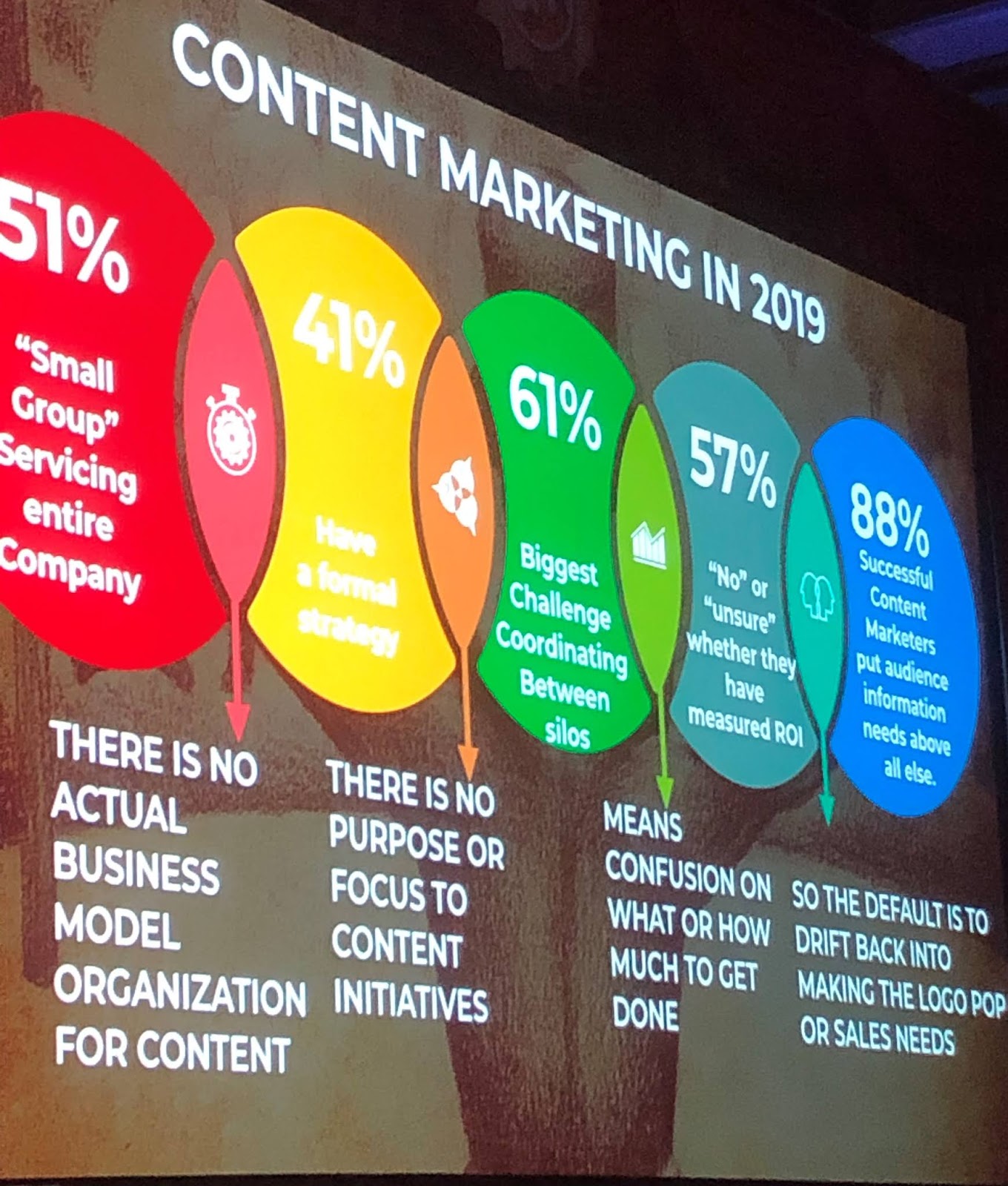
While Jimi Hendrix’s closing set at Woodstock included this iconic performance, Robert Rose’s Content Marketing World 2019 opening keynote set the tone for the days to come. Previewing the latest research from Content Marketing Institute and MarketingProfs, Rose highlighted the following:
- 51% have a small content marketing group servicing the entire company.
- 41% have a formal content marketing strategy – the key differentiator for companies showing content marketing success.
- 61% say their biggest content marketing challenge is coordinating silos.
- 57% are unsure whether they have measured ROI.
- 88% put audience information needs above all else.
We’re moving in the right direction, but we still have work to do. He explained that in a crowd, you tend to pick out certain people you find familiar. We need to set the expectations and context for our content so our customers will expect to see it. The right content will have people looking for it.
I Can’t Explain (The Who)
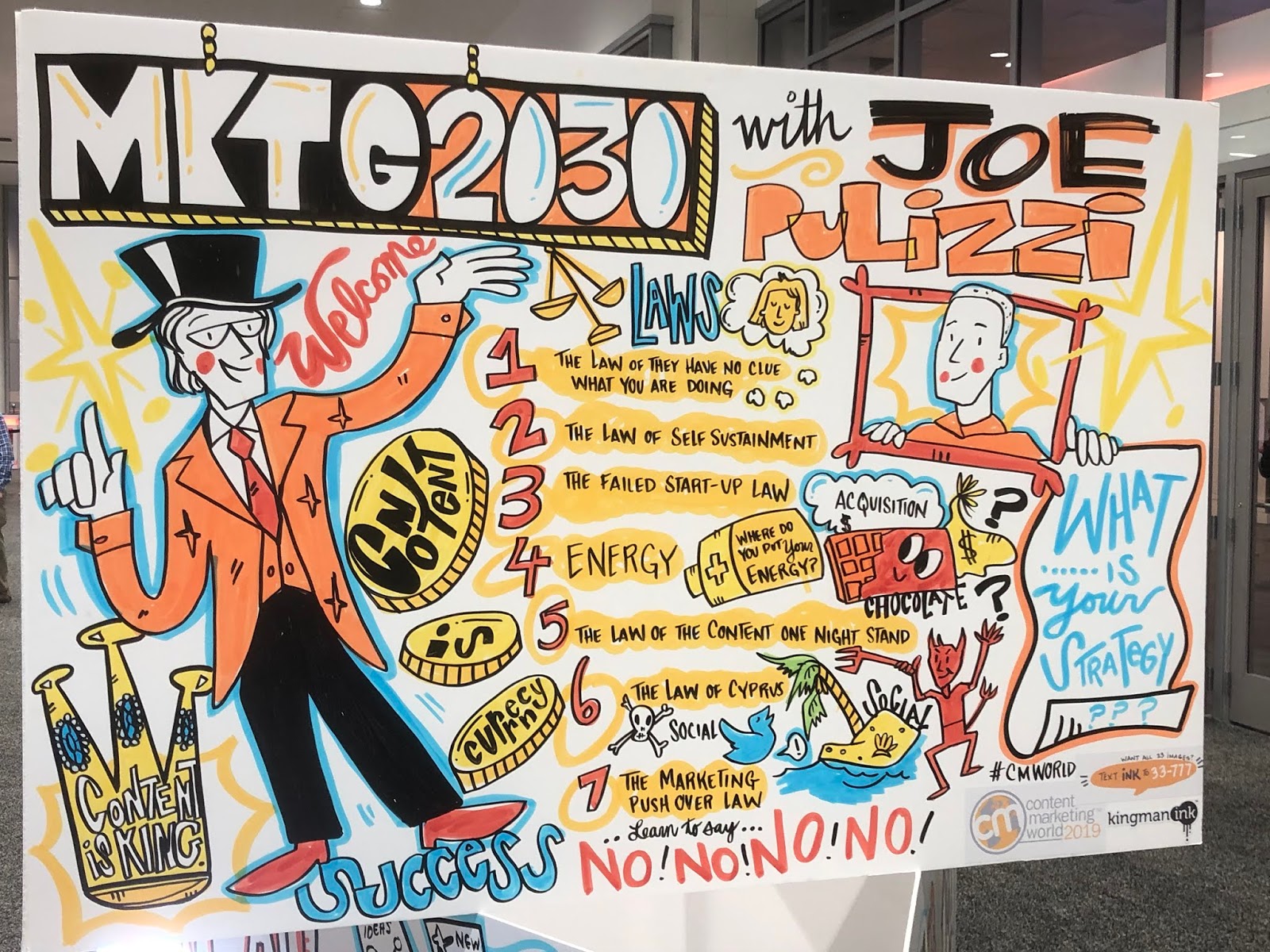
Joe Pulizzi presented 7 Content Marketing Laws for the Next Decade. I won’t go through all here, but the first law is that you need to explain what you’re doing to those that control the budget. If they have no clue what you’re doing, they’ll cut the budget. Not only explain what you’re doing but why. They need to understand the logic, the goals and the ultimate payoff.
Even more than explaining why you need to be able to say no to requests that don’t fall within your content marketing strategy. Pulizzi said, “You know you’re right. You have the strategy. You’ve done the work. Stick by it as if your life depends on it.”
This also means you have to explain that content isn’t a campaign. It’s an ongoing process. It’s also a long-term play with at least 18 months before you show a return. Our only goal is to create better customers who stay longer.
Soul Sacrifice (Santana)
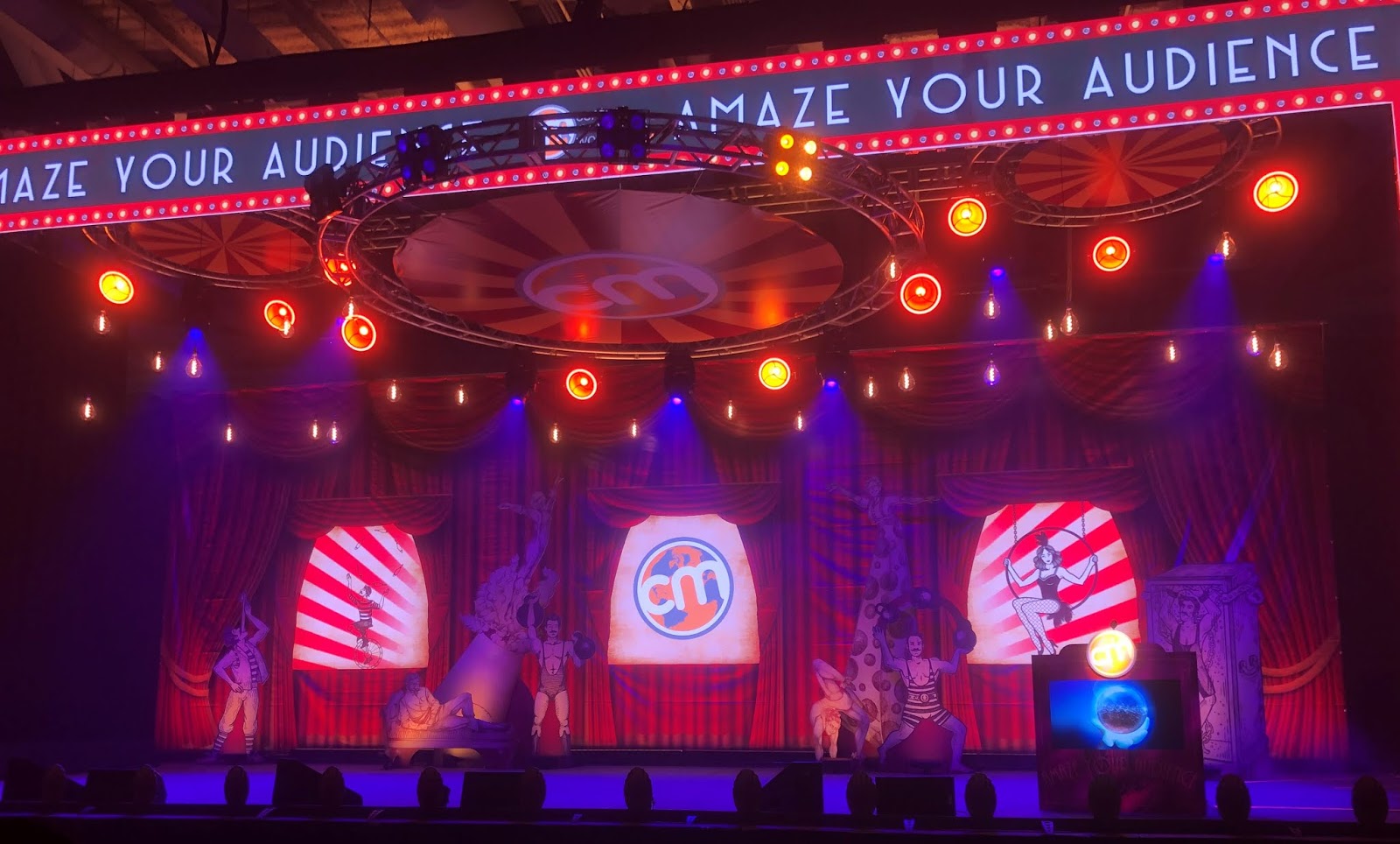
Pulizzi also stressed that you need to build your audience by focusing on one thing. Sacrifice the things you don’t do well to do one thing great. Once you build a loyal audience, then you can diversify to another content platform. Pulizzi discussed MailChimp who launched 12-13 programs at the same time. Most likely, they will fail because they’re trying to do too many things at once.
Peter Gartland and Andrew Pickering, aka Andrew and Pete, reinforced this point with their 90/10 rule. They stated that you should spend 90% of your time doing the one thing you do remarkably well. Use the remaining 10% for experimenting.
If you don’t know what content to focus on, look for reaction spikes. Focus on the content to which your audience is reacting. Better yet, if you know why they’re reacting, you know how to focus your marketing efforts.
Green River (Creedence Clearwater Revival)

I find myself going back to Tamsen Webster’s keynote presentation more than any other from Content Marketing World 2019. She explained how to get the green light from customers with our content. It starts with understanding the mindset of most people. In general, we all believe that we’re smart, capable and good. We need our messaging to reinforce these beliefs.
Getting the green light involves three customer statements:
- I want it. It’s hard to get people to unwant things. It’s also hard to get people to want things they don’t want. Simply telling people to buy your product isn’t effective.
- I believe it. Most people are more persuaded by their own reasons more than those told to them by others. We may get a person to take an action (one time), but the key is getting them to change (continually doing the new action).
- It makes me right. Validate what people already want and believe to create the change.
We are not rational, we rationalize. Our brains supply stories that are consistent with us being smart, capable and good. Webster gave the example of people who successfully lost weight through Weight Watchers. Those who thought they were good, capable and smart lost weight because it validated their wants and beliefs. Those that struggled thought they would become good, capable and smart when they lost the weight.
We need to change from saying, “you’re doing it wrong, so do this with my product,” to building on our customers’ beliefs. How?
- Start with what your customers want.
- Find what’s right in what’s wrong. How can you align the action you want them to take with something they already believe?
- Give them a problem they can solve. Success drives engagement, not happiness.
- Let them come to your conclusion. Use their reasoning to validate yours. To build engagement, solve for success.
You Done Lost Your Good Thing Now (Johnny Winter)
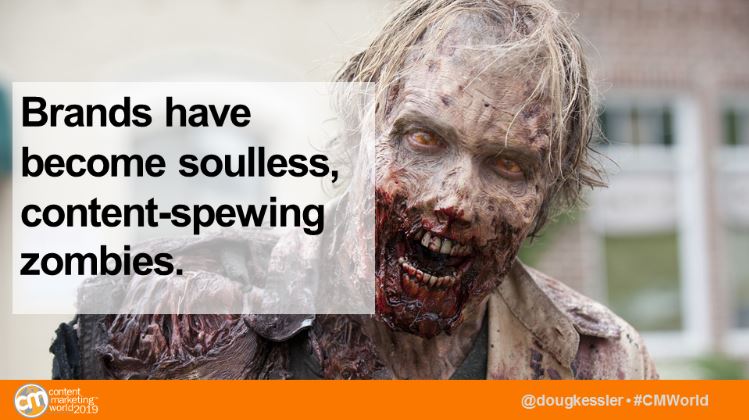
Doug Kessler announced great news! We’ve won the great content marketing revolution! But now, marketing has transitioned to an operational mode. This has led to two major problems:
- Content has become the goal instead of the means to the actual business goals.
- Brands have become soulless, content-spewing zombies.
Kessler’s solution is to revisit the oldest thing in marketing: the galvanizing story. He defines this as a “clear, compelling, structured narrative at the heart of your brand that unites everything you do and say.” The purpose is to shock your customers into action. The galvanizing story takes your customer through the pain of the inevitable change they are facing to see the new opportunity. The story leads them to overcome the obstacle holding them back from taking advantage of the brand new world.
With a Little Help from My Friends (Joe Cocker)
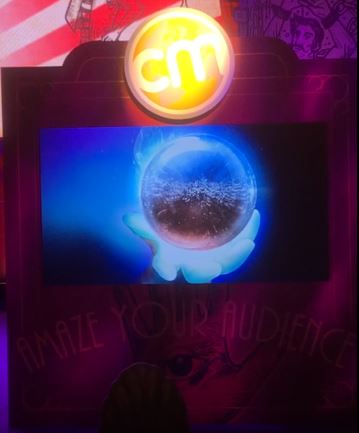
Like Woodstock, the audience (attendees) is as important as the bands (speakers). We refer to this annual event as a family reunion because we get to see each other in person. Our “family” grows every year as more of us meet and talk about our biggest challenges and help each other out. The networking and these conversations are as valuable as the sessions, if not more so. Our community is the reason I believe Content Marketing World is the best marketing conference available.
No Mediocre Content, Ever. (Henry Rollins)
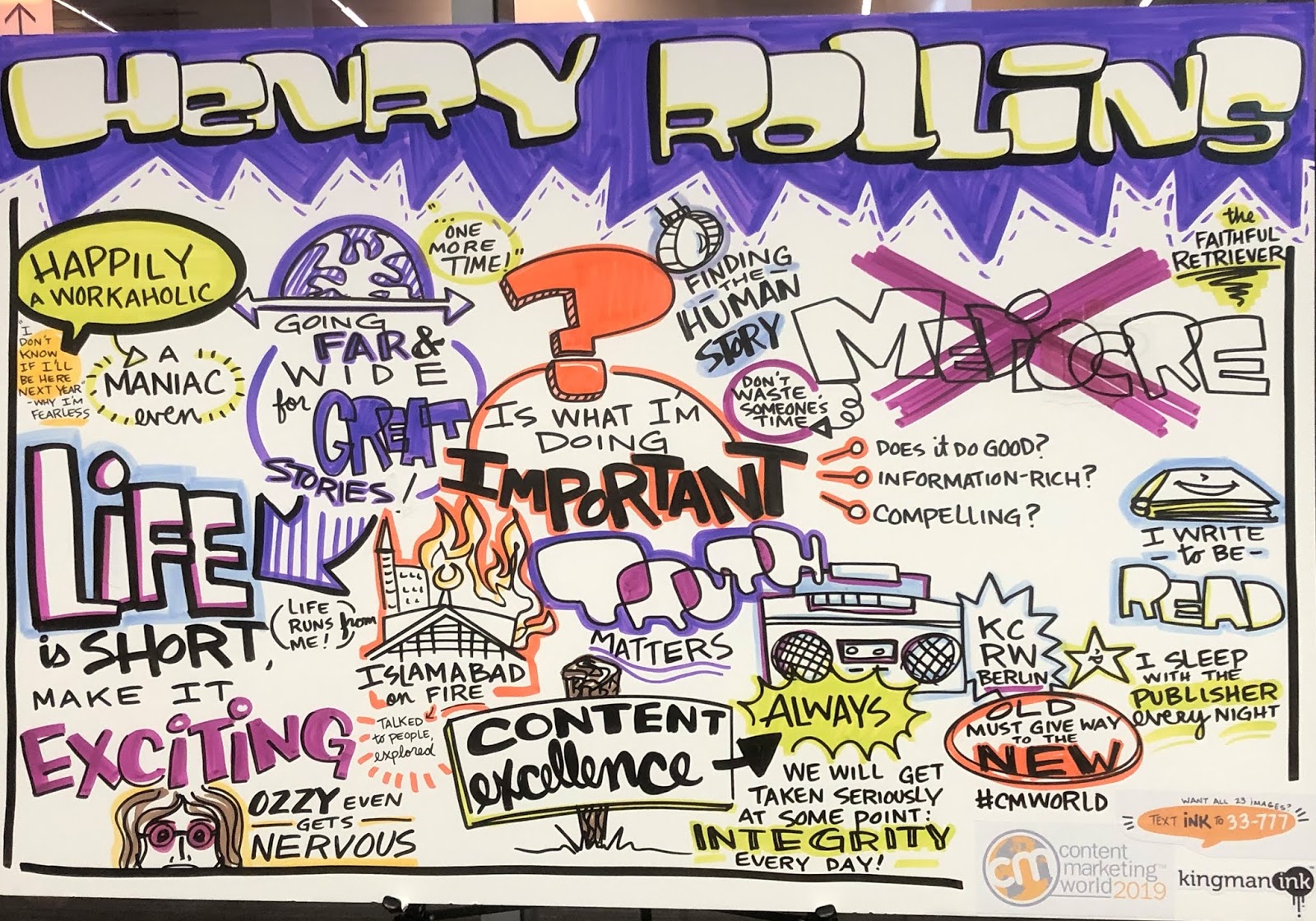
Ok, this header isn’t a song featured at Woodstock. But it is the single sentence that stands out above all if I had to narrow everything down to one. The intensity and passion in which Rollins attacks his experiences are infectious. I’m not saying we have to go to the death-defying extremes that he does. But if you heard his talk and you weren’t motivated by it, you’re simply in the wrong business.
Content Marketing World 2019 has come and gone. It always goes too fast, but the real fun is implementing everything we learn. It’s not always easy as we get thrust back into our daily grinds without a clear point to start putting in new ideas. The key is to just start. Take a few hours to look at your projects and reassess them based on your new knowledge. What can you adjust and update? What do you need to start doing? Better yet, what can you stop doing? I’m making a more concerted effort than ever before not to get sucked back into the “same old.”
If you went to Content Marketing World, what were your biggest takeaways? Thanks for reading my recap!
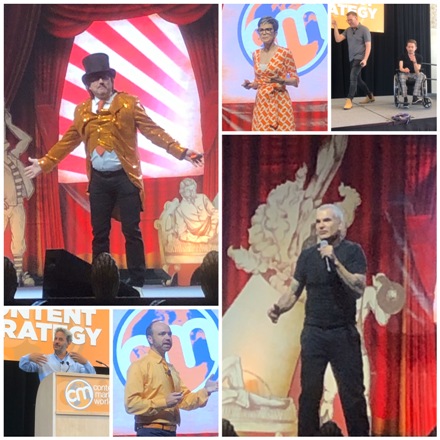
Pingback: Marketing Rebellion: Are You Ready for the Revolution?
Comments are closed.